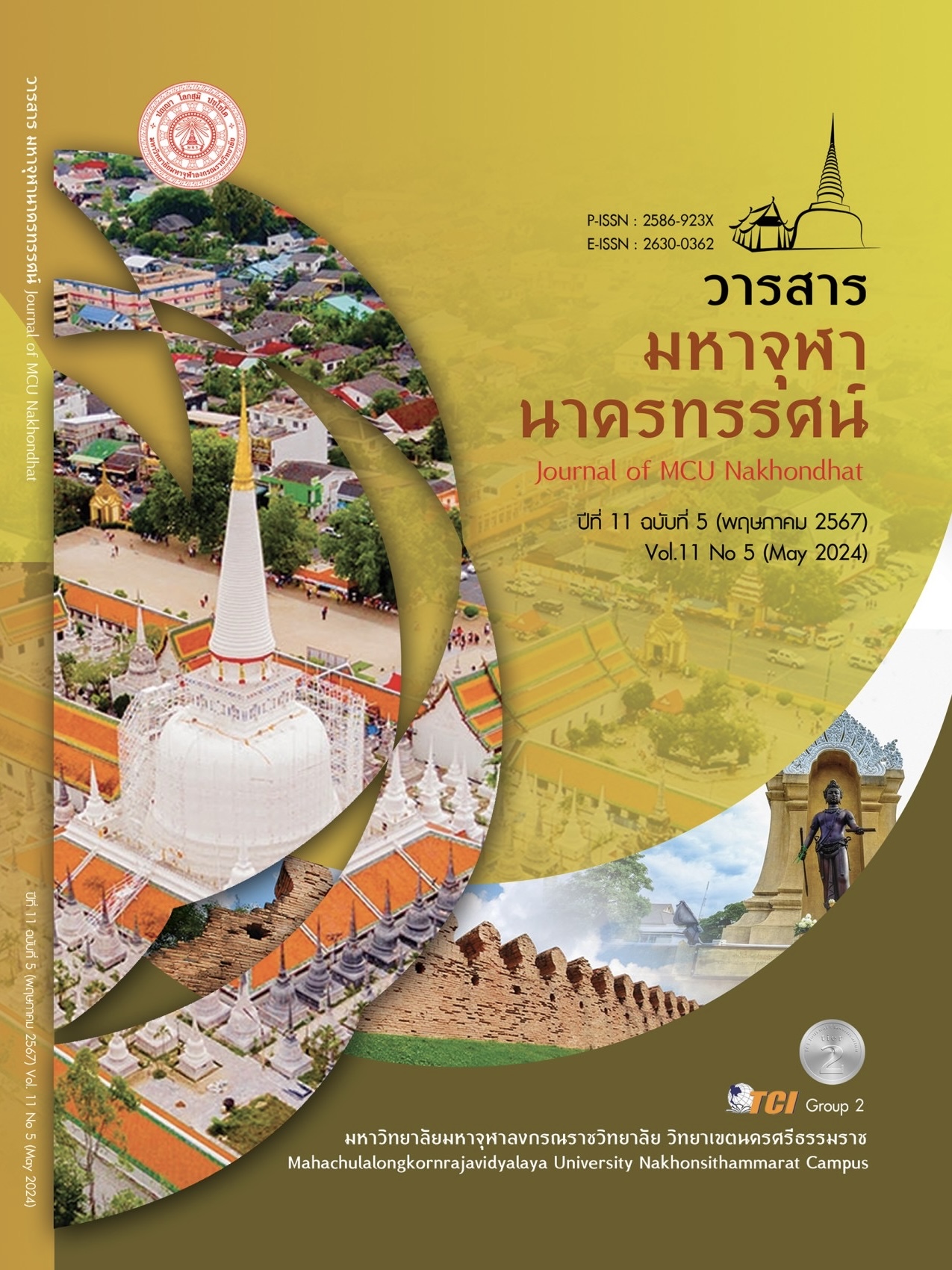HOUSEHOLD HARZARDOUS WASTE MANAGEMENT ON BASE OF PARTICIPATION COMMUNITY CASESTUDY IN PADAD DISTRICT MUENG CHIANGMAI
Main Article Content
Abstract
This cross-sectional survey research has the objectives 1) to study hazardous waste management and participation in household hazardous waste management 2) to study and analyze factors related to people's household hazardous waste management. and 3) to suggest appropriate approaches for managing household hazardous waste on a participatory basis. From a sample of 312 households and 13 people responsible for the environment in the community, data were collected using questionnaires and focus groups. Quantitative data analysis using percentages and averages. For the qualitative data, descriptive data was compiled and Pearson correlation analysis was performed. The results found that household hazardous waste management is at a moderate level (mean is equal to 3.58, S.D is equal to 0.73). Analysis of factors that have a relationship between participation in household hazardous waste management includes 3 aspects as follows: 1) planning r value = 0.54** 2) Analysis of the problem has a value of r = 0.53** 3) Operational value of r = 0.51**, in which all 3 aspects have a positive relationship at a moderate level. By suggesting guidelines for local government organizations Participation in operations should be created for people in the community adequately and regularly. This is for the people and responsible people. Work efficiently In applying the model that has been obtained This model encourages people to be conscious of problems and mutual benefits. The participation of more people allows the results of the research to be expanded. It can be used as a guideline for planning and determining policies for the management of household hazardous waste in communities of local government organizations in the area.
Article Details

This work is licensed under a Creative Commons Attribution-NonCommercial-NoDerivatives 4.0 International License.
References
กรมควบคุมมลพิษ. (2565). รายงานสถานการณ์ของเสียอันตรายจากชุมชน ปี พ.ศ. 2565. เรียกใช้เมื่อ 10 พฤษภาคม 2566 จาก https://www.pcd.go.th/publication/29250
พระมหานิพันธ์ ปริปุณุโณ. (2562). พฤติกรรมการจัดการขยะมูลฝอยในครัวเรือน ตำบลหนองปลิง อำเภอเมือง จังหวัดมหาสารคาม. ใน วิทยานิพนธ์พุทธศาสตรมหาบัณฑิต สาขาวิชาการบริหารจัดการคณะสงฆ์. มหาจุฬาลงกรณราชวิทยาลัย.
วัชราภรณ์ สุริยาภิวัฒน์. (2546). วิจัยธุรกิจยุคใหม่. กรุงเทพมหานคร: จุฬาลงกรณ์มหาวิทยาลัย.
สรินพร ไทรทอง. (2565). การมีส่วนร่วมของประชาชนในการบริหารจัดการของเสียอันตรายชุมชนในเขตเทศบาลเมืองนครปฐม. ใน ในรายการการวิจัย. มหาลัยศิลปากร.
อภิชาติ ใจอารีย์. (2556). สิทธิชุมชน : สิทธิตามรัฐธรรมนูฐเพื่อการดูแลทรัพยากรธรรมชาติและสิ่งแวดล้อม. นครปฐม: เพชรเกษมการพิมพ์.
Adamcova. (2017). Environmental assessment of the effects of a municipal landfill on the content and distribution of heavy metals in Tanacetum vulgare L. Retrieved May 9, 2023, from https://www.sciencedirect.com/science/article/abs/pii/S0045653517311037?via%3Dihub
Best, J. (1977). Research in Education. (3rd ed). New Jersey: Englewood Cliffs.
Cronbach, L. J. (1951). Coefficient alpha and the internal structure of tests. Psychometrika. Retrieved May 9, 2023, from https://doi.org/10.1007/BF02310555
Daniel W. W. (2010). Biostatistics : Basic Concepts and Methodology for the Health Sciences (9th ed). New York: John Wiley & Sons.
Hinkle, D. E. (1998). Applied Statistics for the Behavior Sciences (4 th ed). New York: Hought on Mifflin.
WHO. (2017). World Health Statistics 2017 : monitoring health for the SDGs, sustainnable development goals 2017. Retrieved May 9, 2023, from https://www.who.int/publications/i/item/9789241565486


